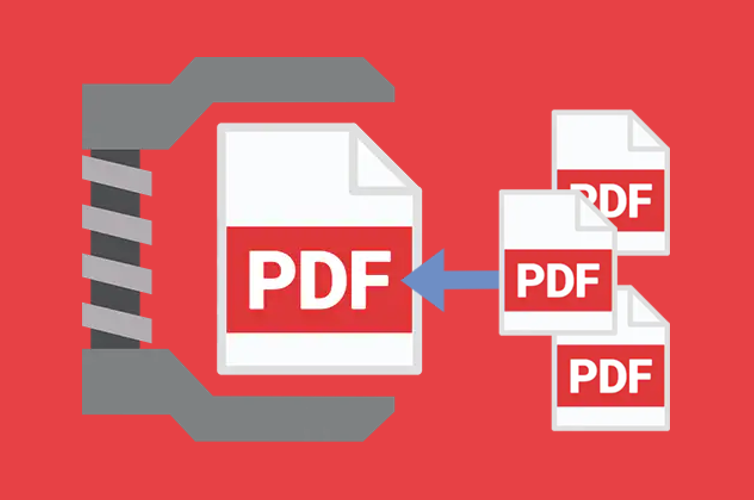Integrating advanced technology is synonymous with advancement in the constantly evolving finance landscape. Loan management software is a shining example of this innovation. Financial technology has revolutionized financial institutions’ and customers’ lending experience.
The software has been carefully created to be both precise and adaptable. The lending software development addresses challenges in the traditional lending process and brings a new age of efficiency, customer satisfaction, and transparency. This blog explores how this technology is revolutionizing the lending industry in many ways.
Financial institutions use our software to streamline operations, making them more agile and responsive. This solution streamlines loan origination processes, increasing decision accuracy and shortening loan approval processes.
As part of our exploration, this study seeks to highlight loan management software’s impacts on customer relations, risk mitigation, and operational efficiencies. As soon as we start this journey, it becomes evident that technology to enhance the customer experience has become an omnipotent trend. This integration has become a strategy that must be followed for the loan process to align with today’s digital expectations.
Understanding Loan Management Software
A loan management solution is a technology-based tool that automates and streamlines the different aspects of processing, managing, and servicing loans. The software is essential for improving operational efficiency, minimizing errors, and improving the overall customer experience in the loan process.
Loan management programs play a central role in automating loan origination processes, covering everything from verification and submission through approval and underwriting. By automating these procedures, loan origination takes less time and effort, resulting in faster decisions being reached more accurately than with manual processing alone.
The software allows for the easy creation and management of loans. The software automates tracking repayment schedules and interest rates. This helps ensure compliance with regulations and minimizes the errors that may occur when manual records are kept.
Software for loan management often has features that facilitate communication and management of documents. Notifications and alerts allow seamless communication among borrowers, creditors, and stakeholders. It also allows the safe storage and retrieval of necessary documents. This reduces the need for physical paperwork while enhancing security.
The software also helps in the collection and service processes by automating payments, creating statements, and managing past-due accounts. Automating these processes can make loan servicing more compliant and efficient.
Key Features of Loan Management Software
The key features play an essential role in improving the efficiency of operations, making better decisions, and ensuring a smooth experience for lenders and borrowers. These are some of the most crucial features of loan management software.
Loan Origination
The loan origination feature simplifies creating, processing, and approving loans. The software allows borrowers to submit their applications online. It automates verification and underwriting. The feature allows all the necessary data to be collected, analyzed, and then presented to loan decision-makers for more rapid and accurate approval of loans.
Application Processing
The verification and approval phases are accelerated by automated application processing. Lending software development services verify information about applicants, including credit histories, income, and employment, to reduce the required manual work. Automating workflows allows for a uniform and consistent approach to the application process.
Document Management
Document management tools allow for the safe storage, retrieval, and sharing of loan-related documents. The digital repository of documents reduces the need for physical paper, decreases risk, and improves access. Lenders can manage the documents required to approve and service loans efficiently. Borrowers can upload their necessary documentation.
Communication Tools
Communication tools that are effective facilitate smooth interactions between lenders and borrowers. Automated notifications, alerts, and messaging systems inform all parties. The feature helps to create a collaborative and transparent lending process.
Automated Loan Servicing
Automated loan servicing features automate repayments, interest calculation, and account management tasks. Computerized systems ensure that payments and statements are accurate, timely, and received by borrowers. Automating routine tasks in loan management software reduces the chance of error and improves the borrower’s experience.
Amortization Schedules
Lenders and borrowers can visualize repayment structures of loans by creating an amortization schedule. The amortization schedule feature shows how each payment is divided between principal and interest. The borrower can better understand their obligations, while lenders can track repayment progress.
Risk Assessment and Credit Scoring
Data analytics software enables lenders to make more informed decisions by assessing borrowers based on factors like credit history, earnings history, and other relevant details. The feature allows for a more accurate assessment of risk, which ensures that qualified candidates are granted loans.
Automated Decision Making
Lenders can make consistent and quick decisions with automated decision-making software. The tools assess the applications using predefined criteria, reducing manual review time. Automation of decision-making increases efficiency and aligns lending decisions with institution policies.
Payment Processing
The payment processing feature handles the collection and processing of loan repayments. The borrower can pay through various channels, including automated clearing house transfers (ACHs) and online portals. Automating payment processing can reduce the risk of error, improve the efficiency of loan servicing, and ensure timely transactions.
Integration with External Systems
The integration capabilities of loan management software allow it to be connected with external data and systems. Credit reporting agencies, payment processing systems, and other financial systems are all included. The seamless integration of the software ensures it uses up-to-date information to make decisions and gives a holistic view of borrower’s financial profiles.
Compliance Management
Features of compliance management help lenders comply with regulatory requirements and standards. Software for loan management often has built-in checks that ensure lending practices align with regulatory and legal frameworks. The feature reduces the likelihood of penalties and non-compliance.
Reporting and Analytics
Reporting and analytical tools give lenders insights into the performance of their portfolios and critical performance metrics. Lenders can generate custom reports on delinquency and loan portfolios. The analytics features help lenders make data-driven decisions and optimize their lending strategy.
CRM (Customer Relationship Management)
The CRM features of loan management software allow for creating and maintaining comprehensive profiles. It includes information about communication, preferences, and interactions. The CRM feature enhances the ability to provide personalized service, answer customer questions, and cultivate long-term relationships.
Scalability and Customization
The software should have scalability capabilities to adapt it to changing needs. The software must scale smoothly, whether handling a smaller portfolio or large volumes of loans. The customization options allow lenders to customize the system according to their workflow, making it more user-friendly and efficient.
What is the Impact of Loan Management Software on Lending?
Both financial institutions and consumers have experienced a significant improvement in their lending experience thanks to loan management software. The lending app software development company improved the efficiency and accuracy of lending processes and customer satisfaction.
Here’s how lending software has improved the experience.
Faster and Efficient Loan Process
Automating tedious tasks with loan management software revolutionized the origination of loans. These systems reduce manual work for lenders from application submission, verification, and underwriting to approval. Automating workflows and decisions can speed up the loan approval process, allowing borrowers to get faster responses.
Improved Accuracy with Reduced Errors
Automating loan origination, servicing, and data processing reduces the human error associated with the manual entry of information and processing. Software for loan management ensures accuracy and consistency in handling large amounts of data. This leads to better decision-making. Reducing errors improves not only the efficiency of the loan process but also the accuracy of information about the borrower and the loan terms.
Enhanced Customer Experience
Adoption of loan management software results in an easier-to-use and more customer-centric experience. Borrowers can submit their loan applications easily online. You can get updates on the status of your application. Automatic communication tools keep borrowers updated on essential milestones and upcoming payments.
Efficient Document Management
The traditional lending process is often accompanied by much paperwork. This can lead to delays or even document losses. Loan management software simplifies document management by centralizing and digitizing all files and data. The borrower can upload documents securely online and have them accessed. This saves time and reduces the effort of handling manual documentation. It not only speeds up the approval process, but it also improves security and access to critical information.
Streamlined Loan Servicing
Automating the loan servicing process is a great way to extend the benefits of loan management software. The software automates payment, creates statements, and manages repayment plans. The user-friendly interfaces allow borrowers to see their payment history and upcoming due dates quickly. They can also view outstanding balances. Automatic alerts and notifications can help keep borrowers on track with their finances and reduce the chance of missing payments and penalties.
Personalized and Adaptive Loan
Many software solutions for loan management include advanced analytics and machine-learning capabilities. Lenders can use this data to assess a borrower’s creditworthiness and repayment history more accurately, customizing loan offers according to factors like credit history, spending habits, and income levels. This personal approach increases the chances of loan approvals for those who qualify and ensures that they receive terms that align with their financial profile.
Effective Risk Management
By providing comprehensive tools for portfolio analysis, loan management software is a critical component in the risk management process. The health of a loan portfolio can be monitored in real-time by lenders, who can identify potential risks. The Analytics capabilities of the software help predict and mitigate risks related to defaults or non-compliance. The proactive approach to risk management contributes to the stability of the institution.
Real-time Data and Reporting
Access to real-time information is one of the critical advantages of software for loan management. Generating custom reports and tracking performance indicators allows lenders to gain insight into the health of their overall portfolio. Real-time reporting facilitates the ability to make informed decisions. This will enable lenders to optimize their lending processes and adjust strategies as market conditions change. The ability to act and analyze current data leads to more competitive and agile lending environments.
Cost Reduction and Operational Efficiency
Using loan management software simplifies the lending process, reducing costs for lenders. Automating routine tasks such as document processing and communication reduces manual labor. The P2P lending software development eliminates printing, storage, and transport costs associated with traditional paper-based processes. The savings from these cost-savings contribute to the improved efficiency of operations and overall financial strength of the lender.
Regulatory Compliance
The lending industry is heavily reliant on compliance with regulations. Many loan management programs include compliance tools that keep lenders up-to-date with the latest industry regulations. Automated compliance checks during the loan application process help lenders adhere to regulatory and legal standards. It reduces non-compliance risks, penalties, and damage to reputation.
Conclusion
The integration of loan management software is a significant leap in lending, improving the experience of both financial institutions and borrowers. The impact of this technology is felt throughout the loan lifecycle – from efficient origination to robust risk management.
Using loan management software increases operational efficiency by reducing the processing time and risk associated with errors. This results in a more responsive, accurate, and faster lending process that meets the needs of modern borrowers. This customer-centric philosophy extends into personalized lending, whereby advanced analytics are used to ensure tailored loan offers that take individual financial profiles into account.
The software also provides lenders with real-time analytics, which allows them to make informed decisions and plan strategically. This technology automates compliance checks and offers tools to manage risk effectively. It ensures that lending institutions maintain financial stability while operating within regulatory frameworks.
Loan management software is becoming a vital component of the digital transformation that financial institutions are undergoing. It helps to foster transparency, innovation, and accessibility in their lending processes. This technology improves efficiency and service quality, resulting in a dynamic, responsive, and flexible lending experience.
I am the global head of offshore strategic partnerships at AddWeb Solution, a renowned Lending Software Development Company delivering innovative solutions to meet clients’ needs. With a strong commitment to excellence and a customer-centric approach, I ensure that AddWeb Solution remains at the forefront of the industry, providing innovative and scalable solutions that drive digital success.




